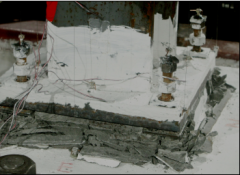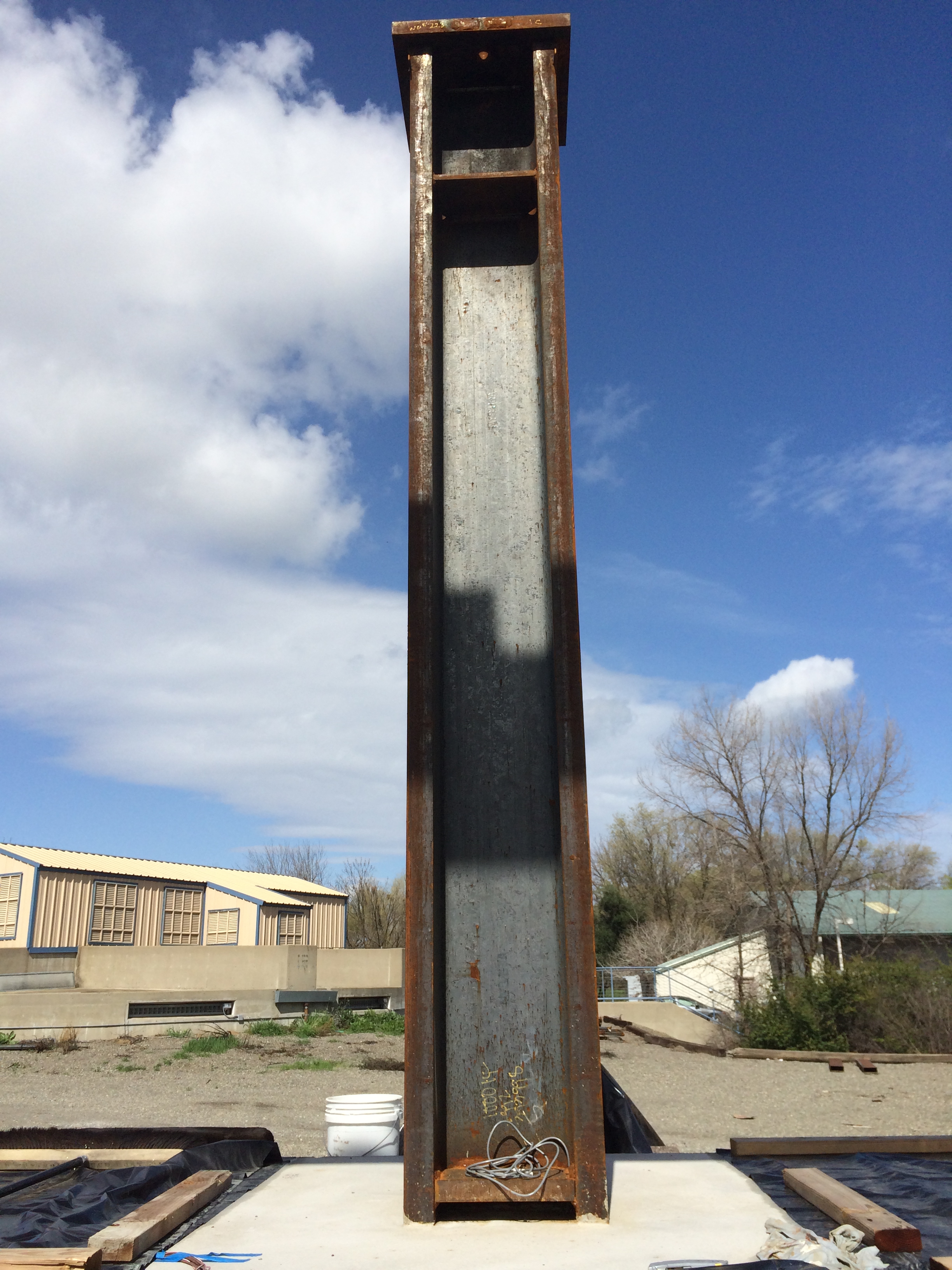
Background
Column base connections are arguably the most critical connections in steel moment frames, transferring forces from the entire structure into the foundation. A recent comprehensive study was conducted in part by the Principal Investigator of the current study on exposed column base connections. The findings have resulted in an improved understanding of the response of these connections (shown to the right), and an enhancement of design approaches currently being incorporated into the drafts of the AISC Seismic Provisions and Specification. Exposed base connections are common in low-mid rise buildings with modest lateral loads. However, in mid-high rise buildings, schools and hospitals in high seismic regions, exposed base connections are often impractical, owing to the difficulty of resisting large moments through tension in anchor rods. Due to the inherent inadequacies of exposed connections for these types of structures, steel columns embedded into a concrete foundation are generally preferred.

Concrete foundations provide an additional bearing mechanism to resist applied moments and shear forces from lateral loads, as well as increased stiffness of the connection, in turn increasing the accuracy of a fixed-base model assumption. Though these connections are widely used in practice, there is very little in the way of published information on their design. Thus, practitioners are required to adapt other guidelines or use excessively conservative approaches. Currently, models for steel beams used as brackets connecting concrete shear walls from AISC Seismic Provisions have been used to design these connections. Other design methods include incorporating composite beam-column connection design, or improvising specific designs based on basic force transfer concepts. Experimental research has been conducted on shallowly embedded connections (Cui, Nagae, Nakashima, 2009; Morino et al, 2003), however the models developed and experimental results cannot be easily extended to develop a coherent model for deeply embedded connections, as the force transfer mechanism differs significantly. A study conducted at Czech Technical University, Prague (Pertold J., 1996) resulted in design models for embedded connections; however the study was limited to a small range of input parameters, axial load tests, and relied heavily on FEM modeling. The aim of this study will be to directly address the lack of test data and design guidelines for these connections.
Scope and Intended Outcomes
A series of six large-scale embedded column base connection tests will be conducted, along with a series of tensile “pull-out” tests to examine the behavior of column anchorages. The tests will feature details that are representative of those used in design practice, but also offer insights into the governing force-transfer mechanisms that may be used for the development of innovative connections. The following image shows the proposed test setup for embedded connection testing:

The specific objectives of the research are as follows:
- To develop fundamental understanding of the force transfer mechanisms of commonly used embedded base connections under monotonic and cyclic loading.
- To demonstrate the strength, stiffness and damage characteristics of the embedded base connections for seismic design.
- To develop design methods and criteria for these connections that result in economical and reliable column base connections.
- To update existing codes and standards to bring these immediately into practice
- To propose innovative/alternate details.
References:
Cui, Y., Nagae, T., Nakashima, M. (2009). “Hysteretic Behavior and Strength Capacity of Shallowly Embedded Steel Column Bases,” Journal of Structural Engineering, Vol. 135, No. 10.
Grauvilardell, J.E., Lee, D., Ajar, J.F., and Dexter R.J. (2005), “Synthesis of Design, Testing and Analysis Research on Steel Column Base Plate Connections in High Seismic Zones,” Structural Engineering Report No. ST-04-02. Minneapolis (MN): Department of Civil Engineering, University of Minnesota.
Morino, S., Kawaguchi, J., Tsuji, A., and Kadoya, H. (2003). “Strength and Stiffness of CFT Semi-embedded Type Column Base,” Proceedings of ASSCCA 2003 Conference, Sydney,Australia, A. A. Balkema, Sydney, Australia.
Pertold J. Embedded column bases. Ph.D. thesis. Prague: Department of Steel Structures, Czech Technical University, 1996.



